 The precocious talent that is Stephen Strasburg By Aidan Flynn
Game 7 of the World Series. Your number one starter is on the mound: a Ryan, a Seaver, or perhaps a Gibson. The guy with nerves of steel and the most electric stuff on the team. The guy that can go nine innings and put the team on his back. This is the guy who you want the ball in his hands with the light on and the pressure cooking. This is your best pitcher. This is the definition of an ace.
The following rankings are players who we feel best fit the attributes of an ace, while also taking into account past performance and future projection. While there are more than just five aces in the game, that is how many we have on this list. Apologies to the honorable mention guys!
In terms of up-and-coming right handers, some names to keep an eye on are Dylan Bundy (Orioles), Gerrit Cole and Jameson Taillon (Pirates), and Taijuan Walker (Mariners). All four are power arms with ideal bodies and repertoires to fronting a big league rotation. However, given the attrition rate of pitchers, there is no guarantee these precocious arms will have any major league glory. This attrition capability is something that was definitely accounted for, as you will see with our very first name on the list. Any averse trends could start a chain reaction that could cause a pitcher to flame out prematurely. With that said, we also could not completely ignore past performance and did reward players based on their previous successes. As I just said, a perfect example of this is our number five right hander in the game today.
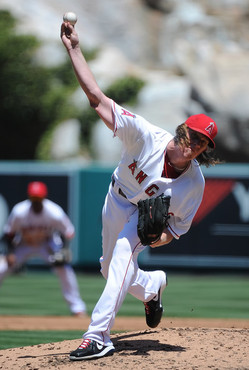 Is falling down while pitching good? 5. Jered Weaver, Los Angeles Angels of Anaheim A season that culminated with 20 wins and a third place Cy Young finish was just another year for Angels ace, Jered Weaver. Although lacking the power arsenal typically seen from an ace, Weaver's finesse repertoire has been incredibly successful over the years. In terms of just simple run prevention, Weaver has been the very best in the American league over the past 3 years (2.73 ERA). It should be noted that there were a couple of trends that prevented Weaver from ranking higher on this list. With a declining K/9 rate (9.35 in 2010; 6.77 in 2012), waning fastball velocity (89.1 mph in 2011 to 87.8 in 2012), and recent injury history (battled back and shoulder trouble throughout 2012), there are some legitimate concerns for Weaver heading into this season. Obviously, as a pitcher has to rely more and more on his defense, he is more susceptible to the whims of BABIP. Any drastic changes in BABIP or team defense could have a damning effect on the pitcher at hand. Additionally, Weaver's back and shoulder issues that plagued him in 2012 leave him vulnerable to more serious problems in the future. Furthermore, these weaknesses could only be further compromised given his mechanics that include severe spine-tilt, something that is typically not a sign of healthy mechanics (see picture above). Even with these concerns, Weaver still has his control (2.15 BB/9 past three seasons) and should greatly benefit from having an all-world defensive outfield trio of Mike Trout, Peter Bourjos, and Josh Hamilton given his extreme fly ball tendencies. While I am wary of Weaver repeating his performances that made him one of the very best in the game, I still have confidence that Weaver can be an ace-like starter at the big league level. Last year, Weaver was a 3.7 win pitcher despite only throwing 188 innings because of his battle with injuries. Assuming full health (which is no guarantee), I see Weaver being about a 4-4.5 win pitcher next season.
4. Johnny Cueto, Cincinnati Reds While just about every diminutive Dominican with a devastating change-up gets slapped with a mini-Pedro label, Johnny Cueto has been the closest to meeting the hype. Even though he doesn't exactly meet Pedro's absurdly high standards (something in which NO ONE does), Cueto is a damn good pitcher in his own right, and deserving of his spot on this list. This past year, Cueto built on his breakout 2011 campaign (in which he had a league-leading 2.31 ERA) with a more-than-respectable 2.78 ERA, league runner up pitcher WAR total of 5.8, and highest ERA+ among qualified starters (152). Additionally, Cueto improved both his walk and strikeout rates to 2.03 BB/9 and 7.05 K/9, respectively. Keep in mind, Cueto has the unfortunate task of pitching in the hitter's haven of Great American Ballpark. This especially hurt Cueto early in his career, as he was more of a fly ball pitcher. However, Cueto has learned to adapt to his home environment by gradually improving his ground ball and home run rates practically on an annual basis, something of which can be owed to an increasing reliance on his excellent changeup. This growth has greatly aided Cueto from being killed in Cincy's small park, which in turn, has allowed him to thrive in this typically hostile environment. 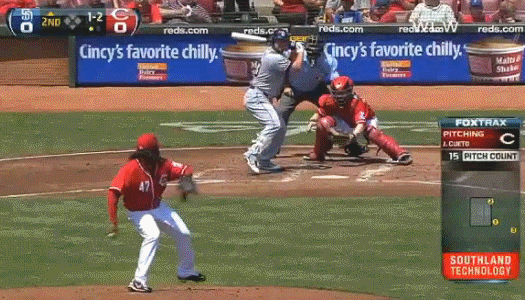 Cueto's changeup has allowed him to succeed where few pitchers can Also of note, Cueto has a unique element to his game that only adds to his overall value: the pickoff move. Cueto led all right handers in pickoffs in 2012 (9) and since 2011, Cueto has only allowed 2! runners to successfully steal off of him. While some of this praise should go to Ryan Hanigan (the Reds' catcher during the time), Cueto undoubtedly has a great move (see the gif below). This underrated, even unnoticed trait is one that separates Cueto from his peers when discussing the best right handers in the game today.
Accounting for these improvements as well as his Cy Young caliber performance, Cueto should once again be one of the best pitchers in the National League. While he might not be considered an ace by many, I like Cueto's overall skillset and hope his name starts to reach a wider audience. Fronting the rotation for a legitimate pennant contender, Cueto has a realistic shot at being a 4.5+ win player in 2013.
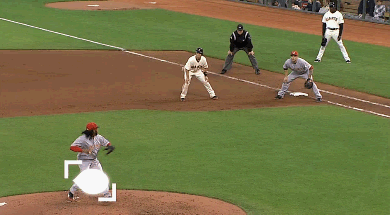 Keep in mind Posey only attempted 2 steals all year; he probably wasn't going 3. Stephen Strasburg, Washington Nationals Certainly the most hyped pitching prospect of recent memory, if not of all-time, Strasburg has experienced quite a start to his professional career. His unbelievable and thrilling 14 strikeout debut (something that I still get goose bumps watching). His unfortunate and tragic injury that required Tommy John surgery, of which prematurely ended his promising rookie campaign. His controversial "innings limit" that saw dogged media scrutiny throughout the summer. Yet, through all of this, his performance has never wavered, with all signs pointing to a Cy Young caliber season in 2013. In fact, Strasburg would have been in the Cy Young race last season if not for the aforementioned innings limit (only threw 159.1 innings). This of course prevented him from racking up the more impressive cumulative statistics (wins, strikeouts, etc) seen from other candidates even while having similar or better rate numbers. For example, Strasburg had a strong 3.16 ERA and absurd 11.13 K/9 rate despite only having 15 wins and 197 strikeouts. Additionally, Strasburg posted the best FIP (Fielding Independent Pitching) in baseball last year, a statistic that accounts only for things a pitcher can absolutely control (strikeouts, walks, and home runs). This statistic indicates what a pitcher's "true" ERA should be, and with Strasburg's FIP being 34 points better than his ERA (2.82 to 3.16), it is reasonable to think that Strasburg pitched even better than given credit for. While I understand this ranking could be considered aggressive given his limited amount of innings thus far, Strasburg's combination of talent and numbers are just too much for him not to be this high. Remember, these rankings take into account both past performance and projection, both of which serve Strasburg well. With a substantially looser innings leash, Strasburg could very well double his 2.7 win campaign, en route to possibly the first of many Cy Youngs. 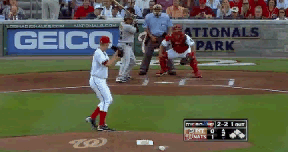 One of 14 K's from Strasburg's electric debut 2. Felix Hernandez, Seattle Mariners It shouldn't be a surprise that the richest pitcher in baseball is also on the short list for the very best. When I profiled the "King" the day his contract details first emerged, I liked the deal for a variety of reasons, even with the inherent risk that comes with being a pitcher.While there were some external factors I liked about the deal (namely, keeping a fan base happy), the biggest positive was none other than Hernandez himself. He's a workhorse (200+ innings past five seasons), prevents runs (career 3.22 ERA), strikes guys out (career 8.3 K/9), keeps the ball on the ground (career 54.4 GB%), and has an excellent walk rate (2.67 BB/9). He's that freakin' good. While some pessimists point to a drop in fastball velocity (93.3 mph in 2011 to 92.1 in 2012), he combated that with the best strikeout, walk, and home run rates of his career. To those that say he will be hurt with the fences coming in this year at Safeco Field (Seattle's home park), Hernandez's ground ball tendencies should prevent him from being hurt much, if at all, by this change. The "King's" overall mastery of his craft honestly doesn't give me a lot of things to say other than he really is that good. Hernandez finished fourth in the CY voting and was worth 4.6 wins for the Mariners in 2012. Expect more of the same as Hernandez is entering his physical prime at the ripe age of 27, with a good probability of posting another Cy Young caliber campaign. 1. Justin Verlander, Detroit Tigers Just as it is obvious that Felix Hernandez is that good, it is just as obvious that Justin Verlander is the best pitcher in the game (or at least in my opinion anyways). Following an impossible to repeat performance in 2011, which capped him both the Cy Young MVP, Verlander practically did just that, finishing second in the Cy Young voting to David Price. He once again led the league in innings (238.1), K's (239), ERA+ (160), and pitcher WAR (7.6), and actually had better peripherals than he did in his otherworldly 2011. In fact, I think he was just as deserving of the Cy Young this year, and if not for his extreme amount of success the year prior, he might have won it. As with Hernandez, there isn't a whole lot to nitpick with Verlander. He's the prototypical ace, with at least three elite pitches (fastball, curveball, changeup), excellent command (2.27 BB/9 last year), incredible durability, and a bulldog mentality. Heck, he is even dating Sports Illustrated cover model Kate Upton, and has his eyes set on being the first $200 million pitcher in the game. The guy literally has everything going for him! Overall, Verlander is a stud and the bona-fide ace of an entire generation. He was over 7 wins last year and has showed no signs of slowing down. Years from now, I believe we will look at Verlander the same way we look at Nolan Ryan, Tom Seaver, and Bob Gibson. He's a hall of fame talent deserving of all the superlatives. Quite simply, he's that good. 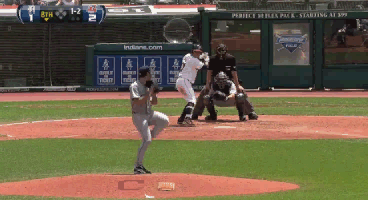 98 mph in the 8th inning=Unfair
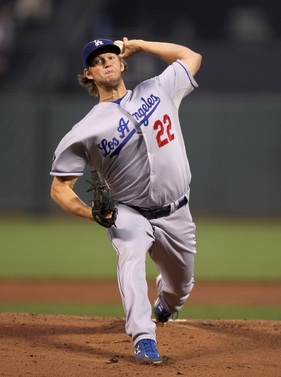 Clayton Kershaw should make a run at 2013 CY By Nick Rabasco: The game of baseball is rich with very talented left-handed pitchers. From Lefty Grove to Sandy Koufax to Steve Carlton to Randy Johnson, there is a long line of tradition from southpaw aces. Some are starting to close out their great careers, such as C.C. Sabathia and Cliff Lee. Some young stars like David Price and Clayton Kershaw are quickly emerging, and look to have long and healthy careers ahead of them. Although a majority of pitchers in the game are right-handed, 6 of the top 10 WAR leaders for pitchers in 2012 were left-handed, including 3 in the top 5. Left handers are a rarity in today’s game, but prove to be very valuable to a team’s staff. I understand we kind of wimped out of the hard rankings (just rank the top five pitchers in the game, regardless of handedness), but this allows us to discuss more players overall. Nonetheless, the talent among southpaw starters is strong and should remain with the further development of the likes of Kershaw, Price, and the young phenoms Matt Moore and Chris Sale. 5. Cole Hamels, Philadelphia Phillies With the exception of his 2009 campaign, Cole Hamels has been one of the most consistent arms in all of baseball throughout his career. Over the past three seasons, his ERA’s have been 3.06, 2.79, and 3.05 respectively. His ERA+’s have been 133, 137, and 131 over that same span. It doesn’t get much more consistent than that. He has also been extremely durable for the Phillies, as he has thrown at least 200 innings in 4 of the past 5 seasons. Hamels also sports impressive strikeout and walk rates. For his career, his BB/9 is at 2.2 and his K/9 sits at 9. It looks like Hamels will be staying in Philly for a long time to come and he has deserved his contract extension. You can expect Hamels to be just as productive as his 4 win season in 2012 next year. 4. C.C. Sabathia, New York Yankees CC Sabathia is heading his fifth season of his long seven year deal with the New York Yankees. Through the first four years, he has proven to be very successful in the pinstripes. C.C. is most known for being a workhorse, as he has compiled 200+ innings in each of his last 6 seasons, including at least 230 in 5 of his last 6. He also has not had an ERA above 3.38 in his past 7 seasons. His ERA+ has never dipped below 100 in any season, and is at 125 for his entire career. However, C.C. is coming off a season that shows he may be declining just a bit. He still had a great year, but his WAR of 3.3 was the lowest it has been since 2006. He also was limited to exactly 200 innings, which is at least 30 less than 2009, 2010 and 2011. Sabathia will be 32 years old in 2013, but he still figures to be the leader and ace of the Yankees staff in 2013. I would expect him to give his usual 200 innings with an ERA in the mid 3s again for New York. 3. Cliff Lee, Philadelphia Phillies
Cliff Lee won six games in 2012. That was all he was able to muster in 211 innings and 30 starts. Some would be ignorant enough to just look at that number and think that Lee was a failure and had a down year in 2012. This is false, as Lee was actually one of the better pitchers in all of baseball. He threw 211 innings and had an ERA of 3.16 with an ERA+ of 127. He also struck out 207 batters and led the league in BB/9 (1.2) and SO/BB (7.39). To further look at Lee’s unbelievable control, he did not hit a single batter in 2012 and let loose just 4 wild pitches. Lee has been extremely durable and consistent since his Cy Young campaign in 2008. He has thrown at least 200 innings in his past 5 seasons and hasn’t had an ERA above 3.22 in any of those 5 years. I expect more of the same for Lee in 2013 and should be around a 4 win player for the Phillies.
2. David Price, Tampa Bay Rays
At just 26 years old, David Price has emerged as one of the top pitchers in the game of baseball. Price won the American League Cy Young award in 2012 after he finished as the runner-up in 2010. Last season, Price compiled 20 wins with an ERA of 2.56 and an ERA+ of 149 in 211 innings for the Rays. He also had impressive strikeout and walk rates, with a K/9 of 8.7 and a BB/9 of 2.5. Durability seems to be a key with these pitchers, and Price is no exception. He has thrown at least 200 innings in each of his first 3 full seasons. He has also struck out at least 200 batters in each of the past 2 seasons. Price was a 6 win player in 2012 so it would be tough to expect that kind of production again next season, but I still believe he will be around a 4 or 5 win player in 2013.
1. Clayton Kershaw, Los Angeles Dodgers
Clayton Kershaw is just 24 years old and has already established himself as one of, if not the most, elite pitchers in major league baseball. He has led the league in ERA in the past two seasons at 2.28 and 2.53 respectively. He has thrown at least 200 innings in each of his last 3 seasons, including 227.2 in 2012. He led the league in strikeouts in 2011 with 248, and followed it up with 229 in 2012. Another stat he led the league in for 2011 and 2012 is WHIP, at 0.97 and 1.02 respectively. Kershaw gave up just 6.7 hits per nine innings in 2012 which again led the league. His ERA+ for his entire career is staggering at 138. Clayton seems likely to cash in on a monster contract at some point, given his track record and young age. He was a 6+ win pitcher in 2011 and 2012 and I would expect around 6 again for 2013. Honorable Mention: Chris Sale, Chicago White Sox Matt Harrison, Texas Rangers Gio Gonzalez, Washington Nationals
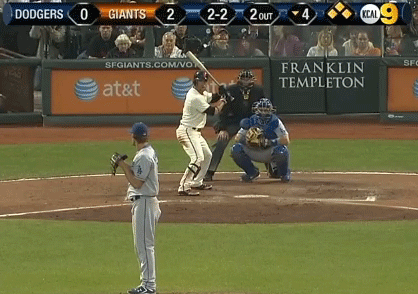 Video evidence of Kershaw's dominance
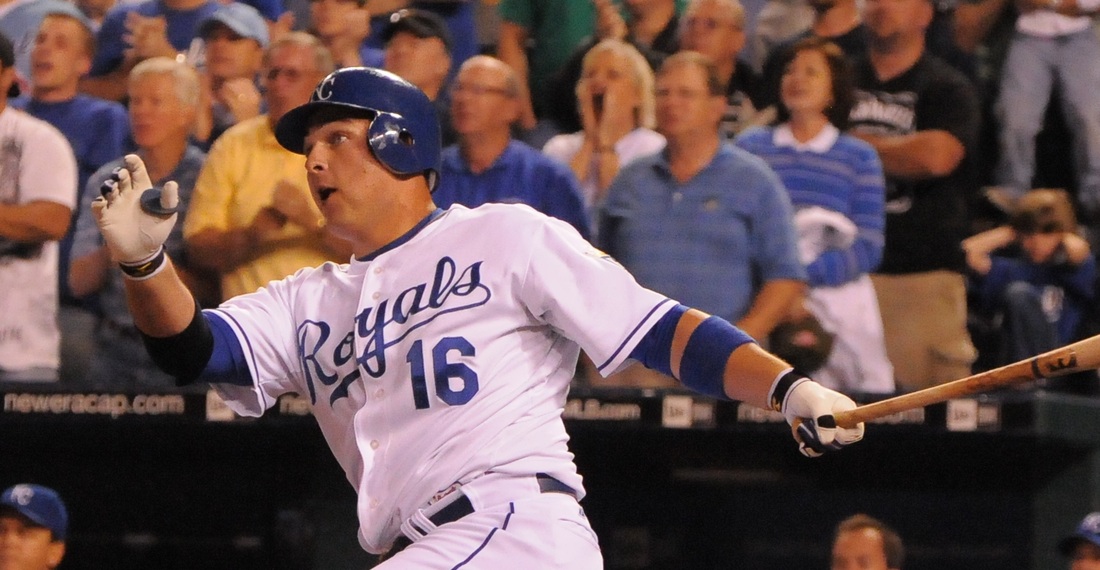 Will Billy Butler help bring home the "bacon" for Kansas City? By Aidan Flynn Initially a ploy to end the run of mound dominance seen in the late 60's, the designated hitter has certainly been the most controversial position in the game since its inception forty years ago. While the National League remains tied to strategy and small-ball, the American League's adoption of the rule has eschewed this facet of the game with the sole purpose of maximizing offensive production. Undoubtedly, the DH has created the opportunity for many to showcase their great offensive talents, with no better example than all-time great, Edgar Martinez. Of course, DHs don't quite bring the same value as a field player, because they can only impact the game one way: with the bat. So, it's only appropriate that this list will focus on the best full-time hitters at the position. I say full-time, because more and more teams use the DH as a platoon/day-off arrangement, with permanent DHs as sort of a dying breed. Because of the dearth of full-time DHs, we only have the top three designated hitters listed. Onto the rankings...
3. David Ortiz, Boston Red Sox
Following his poor 2009, folks throughout the game were calling for the retirement of David Ortiz. That year, Ortiz hit just .238/.332/.462 and posted the worst K and BB rates of his Red Sox career. However, Ortiz has since silenced his critics by actually steadily improving since that '09 slump, culminating in 2012 with a career high in OPS+ (171) and career low in K%. While Ortiz's late career revival is one that certainly goes against the norms that come with player aging, that doesn't mean Ortiz can't sustain it, at least for a year or two. However, if there is something to derail Ortiz's production, it would be his recent run of injuries. Last year, Ortiz only played in 90 games because of an Achilles strain, forcing him to go on the DL on two separate occasions. As a big-bodied, one-dimensional, aging player, these Achilles issues are certainly concerns with Ortiz's future production. With that said, every significant offensive statistic of Ortiz has been trending upward for several years now, and even if he were not able to duplicate his excellent 2012, he should remain a valuable offensive force anchoring the Red Sox lineup. He was about 3 wins in only 90 games last year, so if healthy, he should be worth at least that much in 2013.
2. Billy Butler, Kansas City Royals
Nicknamed "Country Breakfast" (or at least according to his B-Ref page), Butler ate AL pitchers alive this past season, with a .313/.373/.510 line, including a career high 29 HRs and 107 RBI. Entering his age 27 season, Butler has been remarkably consistent arriving on the big league stage during his 21 year old rookie campaign. The past four years are an especially good example of this consistency, as he has had at least a .291 BA (but never higher than .318), a .361 OBP (but never higher than .388), and a .461 SLG (but never higher than .510). Previously one of the best doubles hitters in the game, Butler finally developed the power Royals fans have been praying for, hitting the aforementioned career high 29 home runs. Assuming last year's power display wasn't a fluke (although you know what they say about assuming...), Butler could very well see his power continue to develop as he enters his physical prime. There's no hiding Butler can't run and can't field, but the very absence of these skills allows Butler to flourish at the designated hitter position and highlights what he is truly good at: flat-out raking. Last year, Butler tied his career high in WAR at 2.9, so it would be pretty plausible for Butler to be around and/or surpass that total this year.
1. Edwin Encarnación, Toronto Blue Jays
Affectionately nicknamed E5 (an homage to his more forgettable times as a starting third baseman), Edwin Encarnacion absolutely exploded onto the baseball landscape in 2012, spending a majority of the season penciled in as Toronto's DH. Although he was always a productive bat, Encarnacion established career highs in just about every offensive category hitting .280/.384/.557 with 42 bombs and 152 OPS+. Without having to worry about his defensive shortcomings, E5 (much quicker to type than Encarnacion...) has thrived in his new role. Thus, perhaps it is no coincidence that E5 has seen his two best offensive production (using OPS+) the past two seasons while spending a majority of his games at DH. One concern with E5 is whether his 2012 is sustainable or not. Last year could very well have been a fluke; it also could have been a sign of a player entering his prime and finally being comfortable. I honestly have no idea which it is, but like with most questions in life, the answer probably resides somewhere in between. Encarnacion put up a career high 4.6 WAR last year, and while I don't think he'll replicate last year's extraordinary offensive performance, I like his chances to at least be a 3.5+ win player next year.
Honorable Mention:
Adam Dunn, Chicago White Sox
Kendrys Morales, Seattle Mariners
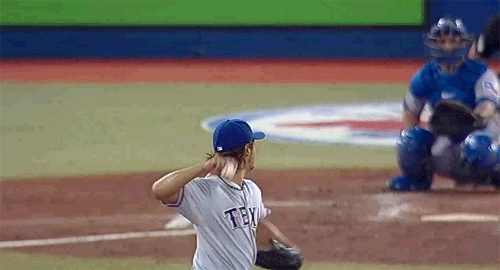 Absolutely CRUSHED
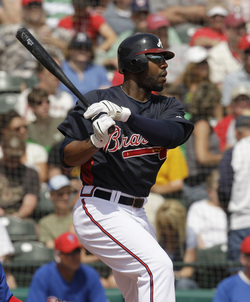 Jason Heyward ranks highly on our list By Aidan Flynn Right field is a position that has long been defined by two traits: a power bat and a power arm. All-time greats Babe Ruth and Hank Aaron both called right field home and are two of the greatest home run hitters in the history of the game. Even today, clips of Roberto Clemente throwing runners out from right can be seen on MLB Network reruns. Today is no different, with many of the best players at the position exhibiting both of skills. As for game's current crop of right fielders, it is a bit top heavy, with very little separating the players on our honorable mention list from the last spot on this list. In my opinion, I really feel as though there is a definitive top four with number five being a matter of personal preference. Even with the lack of top tier talent currently, continued progressions from likes of Giancarlo Stanton and Jason Heyward could once again give right field a couple of the best players in the game. In addition, the tremendous abilities of prospects Wil Myers and Oscar Taveras could further put the limelight back in this corner outfield spot. Fittingly, both of these precocious talents have the prerequisite traits for right field, possessing a rifle arm and a powerful bat, much like our number five right fielder in the game today... *NOTE: Justin Upton was ranked fifth on this list prior to his trade to the Braves; however, he will be playing left field this upcoming year and therefore is excluded from these rankings. I did discuss Upton as a player in the most recent Behind the Trade, lauding his well balanced skillset but also questioning his massive home/road splits and consistency (or lack thereof). If he would have been traded prior to our left field rankings, he would have been left off the top 5, coming in at my number six slot. 5. Josh Reddick, Oakland A's Last year, Reddick burst onto the baseball scene, posting a 4.5 win season and was an integral part in Oakland's surprising division title. Acquired as part of Billy Beane's roster overhaul last winter, Reddick showcases a wide range of skills that made him successful not only in 2012, but should continue to make him a valuable player in the years to come. Defensively, Reddick is among the game's elite, posting at least 10 DRS the past two seasons, with an absurd 19 runs saved last year alone. Much of his defensive excellence is owed to his strong throwing arm (check out this impressive throw to nab former 30 SB man, Jason Bourgeois), which was credited with 15 outfield assists last year, good for third most in the entire major leagues. With above-average range and the aforementioned rocket for an arm, Reddick is an absolute weapon in right, especially capable of slowing down runners from moving first to third. Offensively, Reddick is more of a work in progress, especially compared to his right field peers. Last year, Reddick hit .242/.305/.463 with 32 HRs, 85 RBI, and a 110 OPS+. While they are solid numbers, Reddick lags behind many right fielders who are off this list when using OPS+. Right fielders Torii Hunter (132), Carlos Beltran (128), Nick Swisher (126), and Jay Bruce (118) all have higher OPS+ than Reddick, and all have a longer track record as well. In response to this, I point to evidence that foreshadows possible offensive improvement as soon as next season. The statistic BABIP (Batting Average on Balls in Play) is a useful tool in explaining fluctuations in batting average for a given year, as any extremes from a player's career average usually can be expected to regress to the player's mean. Last year, Reddick had an abnormally low BABIP of .269, below his career BABIP of .277, and well below the league average at around .300. With a simple regression to the mean, it is very reasonable to expect to expect an increase in batting average in 2012. In addition, it is also possible that with Reddick's newfound power (career high 32 HRs, .463), pitchers may pitch him more carefully in 2013. This would result in an uptick in his walk rate and consequently, increase his lackluster OBP (.305) into at least average to slightly above average territory. If Reddick can indeed raise his OBP (aided by a predicted increase in BABIP), and maintain his power and defense, Reddick has a very legitimate case for being the fifth best right fielder in the game today, and one who is very capable of 4+ wins in 2013. 4. Josh Hamilton, Los Angeles Angels of Anaheim The crown jewel of the free agent class, Josh Hamilton shocked the baseball world when he signed a 5 year, $125 million contract with his long-time division rival, the Los Angeles Angels of Anaheim. Hamilton experienced a tumultuous 2012, with both the highest of highs (MVP level April/May, owner of just the 16th four HR game in ML history), and the lowest of lows (prolonged summer slump, struggled as Rangers lost division title). Even with his erratic performance, Hamilton still accumulated a well above average line of .285/.354/.577 with 43 home runs and 128 runs batted in. Undoubtedly, when he's on (and healthy), Hamilton is among the best in the game. However, Hamilton's inconsistency, along with his age, injury history, and unfavorable ballpark transition, prevent him from achieving a higher ranking on this list. Additionally, Hamilton's eroding plate discipline saw him have the highest chase rate in the Majors, obviously not a good sign for anybody, let alone someone with the aforementioned red flags. Nick wrote up a good piece on Hamilton back when he first signed with the Angels, explaining many of these very warnings. But I digress, as these lists are supposed to celebrate the player and recognize his talents on the field, not nitpick every fault a player has. Nevertheless, Hamilton is unquestionably is an exceptional talent in the batter's box, and remains one of the biggest offensive threats in the game. In addition to acquainting himself with a new team, Hamilton will also have to acquaint himself with a new position. Hamilton, a left and center fielder for most his career, is expected to take over in right for the Halos, completing an all-world defensive outfield trio with Mike Trout and Peter Bourjos. It should be noted that Hamilton has played in right field before, but in limited action (only 70 career games). Hamilton's defensive performances up to this point really have depended on his position. In center field, Hamilton has a career -18 defensive runs saved, clearly below average. However, in the less demanding position of left field, Hamilton is a +12 DRS player, with 14 outfield assists in limited action. Like left field, right field is further down the defensive spectrum than center field, and Hamilton should be similar defensively in right as he was in left. Hamilton was only a 3.4 win player in 2012, as his subpar defense in center field really hurt his overall value. I fully expect a defensive improvement in right field, and could be a 4.5+ win player even if his offense doesn't transition flawlessly to Anaheim 3. Jason Heyward, Atlanta Braves As one of the more hyped prospects in recent memory, Heyward entered this season with a cloud of disappointment following a poor 2011 campaign. Heyward did more than make up for it in 2012, rebounding with a 5.5 win season, garnering MVP votes and his first career Gold Glove in the process. Certainly one of the more talented physical specimens in the game today, Heyward's career revival can be attributed to his power and defensive development. Offensively, hit .269/.335/.479 with 27 home runs and a 117 OPS+, a far cry from his .227/.319/.389 line in 2011. Remember, that Heyward will only be 23 come Opening Day '13, so it is reasonable to expect these numbers to continue to improve as he reaches his prime. Additionally, Heyward impacts the game offensively by being an excellent baserunner, without having typical "burner" speed. This often overlooked, underrated trait, is one way Heyward adds to his overall offensive value without being an absolute masher. For example, Heyward ranked sixth in all of baseball in UBR (Ultimate Base Running), which measures extra bases taken (going 1st to 3rd on a single), not grounding into double plays, stolen base rate, among others (for full list of what UBR measures, click here). Just for comparison sake, Heyward was worth nearly 8 runs on the bases alone in 2012, while only stealing 21 bases; former teammate and documented speedster, Michael Bourn, stole 42 bases, but was only worth 6.6 runs on the bases last year. Although Heyward may be a jack of all trades, master of none on offense, he truly is an elite defender in right. Not a whole lot can be said about Heyward on defense except that he is the best at his position. Whether you look at Defensive Runs Saved (DRS), Ultimate Zone Rating (UZR), Range Factor (RF), or even just outfield assists, Heyward ranks #1 every time. Just this past year alone, Heyward saved 20 runs (worth approximately 2 wins) manning right field for the Braves. This isn't just some one year fluke either; Heyward has saved at least 15 runs in every season of his career, with the most DRS and highest UZR over that same time. When you add up Heyward's complete package, he becomes a much more valuable commodity than some may give him credit for. Sure, Heyward needs to cut down on the strikeouts and regain some of his declining walk rate, but at only 23 years of age, he's got some time to figure it out. I think Heyward should only continue to improve with age and could very well surpass his 5.5 WAR in 2013. 2. Jose Bautista, Toronto Blue Jays The ultimate rags-to-riches story in the Major Leagues, Bautista's transformation from minor league journeyman to one of the premier power hitters in the game is nothing short of spectacular. For those that don't remember how bad Bautista was, he was traded for Robinson Diaz back in 2008. Don't know who Robinson Diaz is? Well neither do I, and the Blue Jays got a perennial all-star for a player who has been out of baseball since 2009. Whereas the player ranked number three on this list, Jason Heyward, didn't possess an extremely visible skill (defense doesn't count unless your name is Ozzie Smith), Bautista does possess such a trait and that is his light-tower power. Since his break-out season in 2010, no player has hit more home runs than Bautista (124) and ranks second only to Miguel Cabrera in slugging percentage. However, Bautista's offensive prowess doesn't stop with his power, as Bautista exhibits an excellent eye (career 13.5 BB%, 5% better than league average) and doesn't strike out like big-time power hitters usually do. Last year, Bautista was having typical Bautista season until going down with a wrist injury, sustained during this painful at-bat. Even with his shortened campaign, Bautista put up a respectable .241/.358/.527 line that was especially hurt by an abnormally low BABIP of .215. Once this BABIP normalizes, I don't think it would be too much to expect numbers similar to his previous couple of seasons. Nevertheless, any injury regarding the hands or wrist can be especially troubling and it should be interesting to see how Bautista's health fares this upcoming season. On defense, Bautista isn't quite the stalwart he is on offense. That isn't meant to be an insult; it is merely a testament to Bautista's incredible hitting ability. Throughout his career, Bautista has hovered around league average, with negative -3 DRS in right field for his career, but has posted positive DRS numbers on several different occasions (including last year). Another note of interest with Bautista is that, in the past, he has split time between third base and right field. This sort of flip-flopping on the diamond could have had an adverse effect on his defensive abilities at the time. Then, perhaps it is not a coincidence that Bautista's defensive ratings have steadily improved as he has moved away permanently from the hot corner. However, as long Bautista continues to rake, I think any defensive showing at all really is just gravy for the Blue Jays. If Bautista maintains his offensive talents and just stays healthy, Bautista could double his 2012 WAR total and be a 6+ win player. 1. Giancarlo Stanton, Miami Marlins Mel Ott, Eddie Mathews, Alex Rodriguez, Tony Conigliaro, Frank Robinson, Ted Williams, Bob Horner. This is a list of players who hit at least 90 home runs before they turned 23. There's one name on that list I forgot, and he just happens to be number #1 in our rankings. Giancarlo " Don't call me Mike" Stanton, is right alongside that list of immortals (and Bob Horner) and ranks #1 among right fielders in the game today. Stanton exhibits just about everything you want to see in right fielder, including the best power stroke in the game today. Stanton lead the league in ISO (statistic that subtracts batting average from slugging percentage), slugging percentage (.608), and AB/HR ratio (12.1). However, as great a power hitter as Stanton is, he doesn't fall under the one-dimensional slugger stereotype. Stanton, who, once again, is only 23!, hit .290 and has a career walk rate of 10% (2% better than league average). With the fire sale of the Marlins to the Blue Jays this offseason, Stanton will be the only threat in an otherwise pathetic offense. With that said, Stanton could very well see his walk rate climb even higher, as pitchers try to avoid throwing anything within a mile radius to him. Overall, Stanton's presence is one that is unrivaled in the game today and undoubtedly has one of the foremost offensive skillsets in the game today. In spite of the reputation that hulking sluggers only have one facet of their game (hitting, more specifically power), Stanton, as previously mentioned, doesn't fall victim to this lazy stereotype. In addition to being able to hit for average and have a good idea at the plate, Stanton brings substantial value on defense as well. Stanton has ranked as a positive defender every year in the Majors, including a +10 DRS rating and a +9 UZR just last year. Clearly, Stanton has a more well-rounded skillset than might be assumed just by looking at his intimidating physique (6'5", 245 lbs). Heck, Stanton was even recruited to play tight end at USC for Pete Carroll before signing on with the Marlins back in 2007. Stanton is a rare breed of power and defense and could be argued that only Mike Trout and Bryce Harper have more trade value than this precocious 23 year old. Just going back to that initial list, Stanton isn't with company of just all-stars; he's with the company of inner-circle HoFers (once again, except Bob Horner). Add everything up, and Stanton was and is a fairly confident choice as the best right fielder in the game today. If I do have any qualms with Stanton, it is that he has a high strikeout rate and small, yet noticeable, injury history. Stanton struck out a 143 times last year as he also battled knee inflammation that required surgery in early July. I do think these are some things to be aware of for Stanton in the coming years. However, as I said before, Stanton has it all: an all-around skillset, the legendary company, and the god-given talent. Stanton missed close to 40 games in 2012 with the aforementioned knee injury, but still put up over 5 WAR. If healthy, Stanton could very well be in the mix for the NL MVP, with a good shot at putting up over 7 WAR. Honorable Mention: *NOTE: As you can see, there are plenty of players with whom I wrestled with for the last slot on my list. As I said earlier, I don't think there really isn't a wrong choice here and is a matter of personal preference.
Carlos Beltran, St. Louis Cardinals
Nick Swisher, Cleveland Indians
Nick Markakis, Baltimore Orioles
Jay Bruce, Cincinnati Reds
Andre Ethier, Los Angeles Dodgers
Alex Rios, Chicago White Sox
 Obligatory Giancarlo Stanton mammoth home run
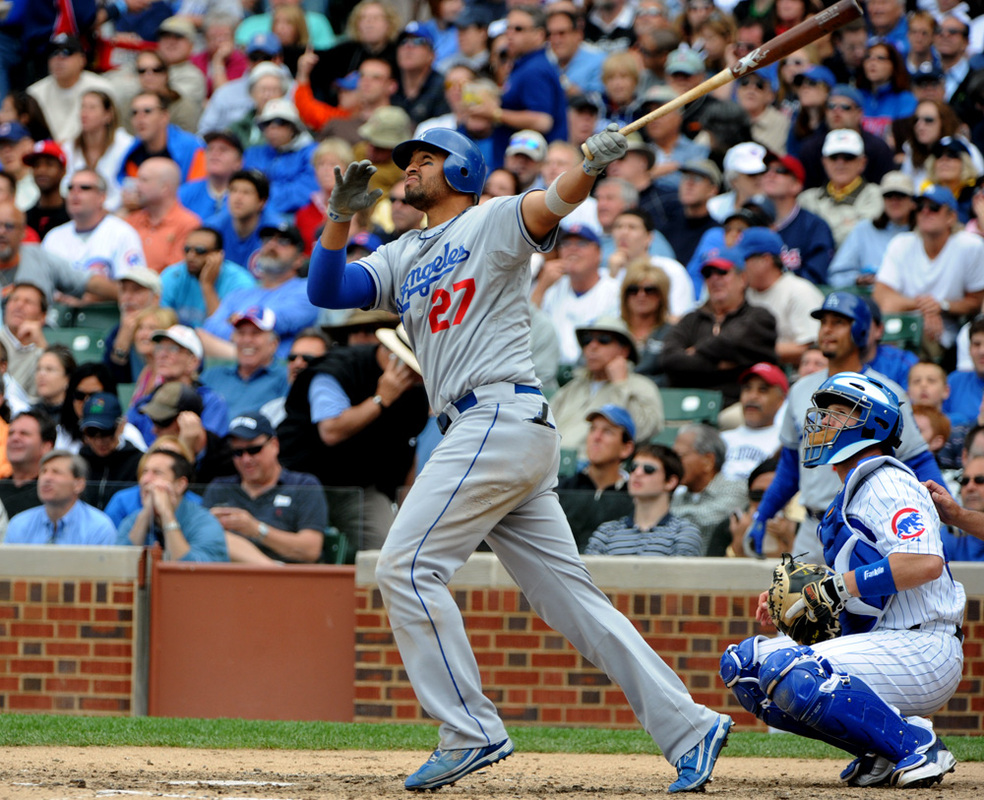 Matt Kemp and his rare power-speed blend makes him one of the best in the game By Nick Rabasco:
Center field has become one of the best positions in baseball today. Young players have come in and made a huge impact right away. In 2012, we witnessed two of the greatest rookie seasons in major league history from Bryce Harper and Mike Trout, both of whom saw a significant amount of time in center field. Even with those two most likely switching to left field in 2013, we still see a tremendous amount of talent. In the past two seasons, we have seen 5 center fielders finish in the top 5 for the MVP voting. This position shows a tremendous combination of both power and speed. Guys like Jacoby Ellsbury, Matt Kemp, Mike Trout, and Andrew McCutchen have proven to excel with this rare combination. We also see huge power numbers from guys like Curtis Granderson, who has put up at least 40 bombs in each of the past two seasons. This position requires great defense as well, needing a ton of ground to be covered and being the leader of the outfield. We saw great defense from guys like Michael Bourn and Mike Trout in 2012 and that certainly should continue. With a great mix of different guys providing power, speed and defense, center field is absolutely one of the brightest positions in the game right now.
5. Adam Jones, Baltimore Orioles
Adam Jones has been getting better and better since he came over to Baltimore in a lopsided trade that sent Erik Bedard to Seattle. The 26 year old center fielder played in all 162 games in 2012 and was a huge reason why the Orioles were able to jump into the postseason. Jones batted .287/.334/.505 with 32 big flies, 39 doubles, 16 stolen bases and an OPS+ of 125. Every one of those numbers were career highs for Jones. One thing that he struggles just a bit with is patience and striking out. He walked just 34 times and struck out 126 times in 2012 and has a career OBP of just .323. Nonetheless, Jones was a well above average offensive player in 2012 for the Orioles and I expect him to have another fabulous season. Defensively, Jones picked up his second career gold glove in center field, despite saving -16 runs in 2012. He also had 7 outfield assists and 8 errors. Overall, Jones was a 3.4 win player in 2012 and I’d expect him to be around that number again in 2013.
4. Michael Bourn, currently a free agent (Braves in 2012)
Michael Bourn was about an average offensive player in 2012 (99 OPS+). He batted a pedestrian .274/.348/.391 with 9 home runs, 26 doubles, 10 triples and 42 stolen bases. The element of speed is what makes Bourn such a feared leadoff hitter. He has stolen at least 50 bags 3 different times in his career. The knock on Bourn is his strikeouts. He struck out a career high 155 times in 2012, which is way too high for a guy who can better utilize his speed by simply making contact and putting the ball in play. What puts Bourn this high in the rankings is his defense. It can be argued that he is the best, if not one of the best, outfielders in all of baseball. Bourn saved 24 runs in 2012 for the Atlanta Braves, and committed just 2 errors with a fielding percentage of .995. A decent offensive player combined with a tremendous defensive player was good enough to make Bourn a 6 win player in 2012. Although the defense is expected to come down from his superb 2012, he should still be very productive and a 4.5+ win player in 2013 even though he will be 30 years of age next season.
3. Austin Jackson, Detroit Tigers
The Detroit Tigers young center fielder broke out and had his best season in 2012. Jackson hit .300/.377/.479 with 16 long balls, 29 doubles, a league leading 10 triples, 12 stolen bases and an OPS+ of 130. Jackson’s stolen base rate, however, declined as he failed to steal 20 bases, which he had done in both 2010 and 2011. Detroit’s leadoff man, Jackson also cut down on his strikeouts. He worked with Jim Leyland and hitting coach Lloyd McClendon with creating less movement in his load with his front foot and leg kick and it paid off big time. Jackson still struck out 134 times, but that was 47 less than what he had in 2011. He also established a career high in walks with 67, which is a good sign for Tigers fans. Defensively, Jackson has never saved less than 5 runs, and has saved 47 for his career. This is extremely impressive being in the spacious outfield in Tiger Stadium. Jackson was a 5.2 win player in 2012 and I’d expect more of the same again for 2013.
2. Matt Kemp, Los Angeles Dodgers
Matt Kemp has emerged as one of the best players in the game today, and some can argue that he is number one. Kemp was bit by the injury bug in 2012, but in 106 games he still put up outstanding numbers. He batted .303/.367/.538 with 23 home runs, 22 doubles, 9 steals, and an OPS+ of 147. When he played a full year in 2011, he finished as the runner-up in the MVP voting. That year, Kemp batted .324/.399/.586 with 39 home runs, 33 doubles, 40 stolen bases, and an OPS+ of 172. Kemp has been a bit below average in center field however, saving -55 runs for his entire career, despite winning 2 Gold Gloves. Kemp is still just 27 years old, and coming back at full health in 2013, I expect him to have a monster season for the L.A. Dodgers. He was a 7.8 win player in his MVP caliber 2011 and I would expect him to be around 6 wins in 2013.
1. Andrew McCutchen, Pittsburgh Pirates
Andrew McCutchen broke out in a huge way in 2012 for the Pittsburgh Pirates, finishing third in the National League MVP race. He batted .327/.400/.553 with 31 home runs, 29 doubles, 6 triples, 20 stolen bases and an OPS+ of 164. These numbers are all well above his career averages and it only figures to get better for him as he is still just 25 years old. Even with 132 strike outs, McCutchen was still able to shatter his career highs in a lot of major offensive categories. On defense, McCutchen was just below an average fielder for the Pirates in 2012, saving -5 runs. He did however commit just one error and boasted a fielding percentage of .997. Andrew was a 7 win player in 2013 and it is hard to expect another season like that. McCutchen has all kinds of talent and I’d expect him to be just under a 7 win player at around 6-6.5.
HONORABLE MENTION:
Jacoby Ellsbury, Boston Red Sox
Angel Pagan, San Francisco Giants
B.J. Upton, Atlanta Braves
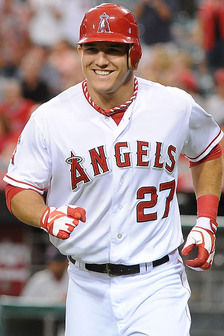 Another accolade for Mike Trout? By: Aidan Flynn
Unlike the speed needed in center or a strong arm in right, left field is usually considered the easiest outfield position to field, and thus often is littered with talented hitters that just aren't up to snuff defensively. However nowadays, left field is not just reserved for large sluggers, as numerous athletes have begun to call left field their positional home; although admittedly these players usually play left in deference to even more athletic center fielder (something we will later see in our rankings). For some, this athletic ability has made them bona-fide stars, capable of not only hitting a baseball a long way, but also making an impact on defense as well. The talent crop of left fielders right now is truly amazing and this list was extremely difficult to select because of so many compelling candidates. With that being said, on to the fifth best left fielder in the game today... 5. Bryce Harper, Washington Nationals Faced with arguably the highest expectations for any player in big league history, Harper, at the tender age of 19, matched and surpassed those expectations in his rookie season. Harper, after underwhelming stays in AA Hagerstown and AAA Syracuse was called up for good on April 28, and never looked back. He hit .270/.340/.477 and smashed 22 home runs en route to winning the 2012 NL Rookie of the Year. Like his ROY counterpart in the American League, Harper possesses a wide range of skills that should continue to make him successful in the coming years. He has burgeoning power (57 XBH), a healthy approach at the plate (9.4 BB%), and strong defensive skills (14 DRS, 10 runs above average ). Harper is still coming into his own as a player, and at 20 years old, is still way ahead of the learning curve compared to his comparatively aged peers. After spending much of 2012 in center and right field, the Nationals' offseason acquisition of Denard Span will move Harper to left, thus his appearance in these rankings. At the heels of a 5 win professional debut, Harper could once again be around that number in 2013 as he continues to grow and mature as a player. 4. Alex Gordon, Kansas City Royals Drafted out of Nebraska as a third baseman, Gordon was immediately hailed as the next George Brett when the Royals selected him second overall in 2005. Blessed with plus-plus power and gifted line drive stroke, Gordon was the can't miss prospect of his time. But cursed as only a Royal would have it, Gordon fell flat on his face, and was demoted twice to AAA before resurfacing with the big league club as a left fielder. Since that positional change, Gordon experienced a revival of sorts, becoming a legitimate star caliber player. Although never being very good defensively at third, Gordon has evolved into one of the best defensive left fielders in the game with 44 DRS and Gold Gloves in each of the past two years. Much of his defensive prowess comes courtesy of his rifle for an arm, throwing out the most base runners among outfielders the past two seasons. Offensively, Gordon is no slouch either, despite not quite living up to enormous potential out of college. He has the classic underappreciated offensive skillset, revolved around taking plenty of walks and hitting plenty of doubles (lead all of baseball with 51 2Bs in 2012). One cause for concern is whether or not Gordon and his elevated BABIPs are for real or not. League average BABIP is around .300, although higher totals can be seen with fast players (Ichiro) or those that hit a ton of line drives (Miguel Cabrera). Gordon's line drive stroke could explain his extremely high BABIPs of the past two seasons (.358 and .356, respectively), but it remains unlikely that these numbers are sustainable. Even if Gordon were to see his batting average decline due to a BABIP regression, he still has the tools to be a very productive player, and one very capable of being a 5+ win player in 2013. 3. Matt Holliday, St. Louis Cardinals One of the most gifted offensive talents in the game, Holliday was once again a key component in the middle of the best NL offense in 2012. In 2012, he hit .295/.379/.497 with 27 home runs, a 138 OPS+, and 102 runs batted in. Holliday's offensive consistency is really quite remarkable; since 2006 (first full season) Holliday has averaged 28 home runs, 104 RBI, a 143 OPS+, and a .316/.393/.544 triple slash line. Predictably, I would expect Holliday to be around those numbers once again in 2013. In contrast to his natural hitting ability, Holliday is quite unnatural in the outfield. He is a career -10 defender and was -6 runs last year alone, and just lacks the range necessary to be even an average defender. If there is a positive from Holliday's defensive game, it comes from his strong arm, responsible for an average of six outfield assists per year. Holliday is the prototypical left fielder; a masher first, and defender second. Although it is always more favorable to have a more balanced game, Holliday makes it work due to his excellent offensive skills and consistency and should once again be around five wins in 2013. 2. Ryan Braun, Milwaukee Brewers Braun entered the 2012 season amidst a cloud of controversy regarding his positive steroid test and subsequent successful appeal. With fans and baseball enthusiasts seriously questioning the validity of his MVP-winning 2011, Braun answered with an equally strong 2012 season. In fact, Braun posted nearly identical offensive numbers with the only noticeable difference in his home run total (41 in 2012 to 33 in 2011). Comparatively, Braun hit .319/.391/.595 with an OPS+ of 159 last year in contrast to his .332/.397/.597 and 166 OPS+ in 2011. What is especially exciting for a player like Braun is seeing how he has evolved and matured as a player since first arriving to the big league stage. This is evidenced in his walk rate (5.9% in 2007 to 9.3% in 2012), K rate (22.8% to 18.9%) and his still improving power (career high in home runs in 2012). Clearly, Braun has matured as a hitter and his overall offensive skillset is among the Major League elite. Also, unlike most sluggers, Braun has a presence of speed in his game. Despite not having the reputation as a burner, Braun has developed an innate ability to steal bases, swiping at least 30 bases in each of the past two seasons. This added facet to his game is just another way in which Braun can impact games. In addition, Braun has grown as a defender as well. After playing out his rookie season at the hot corner (where he was absolutely atrocious; league-leading 26 errors, -3.0 dWAR), Braun has transitioned nicely to left where he has posted positive DRS numbers in each of the last three seasons. Braun's evolution from slugger to all-around machine has been phenomenal as he has undoubtedly cemented himself as one of the game's very best. Given Braun's consistency and overall track record, he could very easily be in the MVP race again with a 7+ win season. When first working on these positional rankings, Braun had been ranked as the unanimous best player at his position. However, a recent position switch by an even greater player caused Braun to be bumped from top positional honors. 1. Mike Trout, Los Angeles Angels of Anaheim I'm just going to go right out and say it: I think Trout is the best player in baseball and will be for years to come. I realize he's 21; I realize he's only had one full season; I realize he wasn't even the best player in his league (or at least according to a bunch of obsolete writers). I don't care. No player in the sport today has more impact on a game than Trout. He is the embodiment of a five tool talent and can truly do it all. To those that may be surprised to see Trout's name in left field after playing much of his rookie campaign in center, get used to it. Angels management announced earlier this offseason that Trout will shift to left in deference to defensive whiz Peter Bourjos, who equals, if not outright surpasses, Trout's defensive talents. This is not so much as a knock on Trout as it is extremely high praise for Bourjos, who has put up some of the best defensive metrics of all-time. Even with Trout saving 21 runs and having a 2.1 dWAR last year, the decision to move him to left is certainly justifiable with Bourjos' presence in center and could actually have a long term beneficial impact on Trout's career. A move to left earlier in his career could save Trout some of the wear and tear that comes with the territory in center, and thus keep his promising talents on the field more often. As previously mentioned and as you undoubtedly already know, Trout's on-field success is not limited to the grass. Trout was one of the best hitters in 2012 and one could even reasonably make the case that his offensive contributions were greater than that of Triple Crown champ Miguel Cabrera. He was that good. He hit for average (.326), he got on base (.399), and hit for power, evidenced by his 30 home runs and .564 slugging percentage. Limitations of the RBI statistic aside, Trout drove in an impressive 83 runs; something of which I find all the more impressive considering where he bats in the lineup and the fact that he missed 20 games while destroying Triple-A pitching. Furthermore, he did most of this damage playing in pitcher-friendly Angels Stadium, as seen in his league leading OPS+ of 171, a statistic that accounts for these ballpark effects. In addition to Trout's natural hitting ability, he can make numerous offensive contributions with his legs. The old saying goes "speed kills," and Mike Trout certainly lives up to that statement by killing other teams on the bases. In 2012, Trout used his speed to steal a league-leading 49 bases. What makes this even more impressive is Trout's extreme efficiency on the bases; he had a 91% success rate, which was good enough for third among players with at least 30 steals. Also, Trout's speed and instincts allowed him to be the Major League leader in the Ultimate Base Running statistic, which valued his baserunning at an incredible 12 runs! Last year, Trout was the game's best player, compiling a mind-numbing 10.7 win season. To put that in perspective, only thirteen players have ever reached this total. Their names: Ruth, Bonds, Hornsby, Yastrzemski, Gehrig, Ripken, Wagner, Cobb, Mantle, Mays, Morgan, Williams, and Musial. These are the all-time greats of the game we are talking about, and Trout's 2012 is firmly in their company. Although this certainly underscores the greatness in his rookie campaign, this forebodes almost certain regression; there literally is nowhere to go but down for him. If there is a red flag in Trout's game, it is that he had a ridiculous .383 BABIP. This number is nearly impossible to sustain, even with Trout's speed skillset and high BABIP track record. It is very plausible for Trout to lose 30 points of that BABIP and instead of being a .330 hitter, he would be closer to a .300 hitter. But then again, with another year of experience under his belt and the fact that he's Mike Freakin' Trout, maybe he will exceed his already lofty expectations. Regardless, Trout is an unbelievable, once-in-generation talent and player where all the superlatives truly do apply. When 2013 is all said and done, I see Trout completing another MVP-esque season with a 8+ win season. For those that might have forgotten Trout's greatness, I hope the .gif below refreshes your memory
 Shortstop is without question one of the most important positions on the diamond. In the 1990s and early 2000s, we witnessed a tremendous crop of shortstop that were never-before-seen offensive forces. Guys like Alex Rodriguez, Nomar Garciaparra, Barry Larkin, Derek Jeter, and Cal Ripkin Jr were stars in the league at shortstop because of this offensive prowess. Nowadays, that offensive power has shifted back to the other 3 infield positions. A-Rod was moved to shortstop and Derek Jeter is at the back end of his career. Hanley Ramirez is another guy who was moved from shortstop to third base. Many of these moves were based on having other guys to man shortstop already; however teams now are looking for a great defender with speed and range to play the shortstop position on an everyday basis, even while sacrificing the offensive firepower. There are some great looking young shortstops that have either already arrived in the show, or will be there very soon. Established guys like Elvis Andrus and Starlin Castro have already produced all-star caliber seasons. On the farm, top prospects Jurickson Profar, Xander Bogaerts, and Francisco Lindor should be names we will be hearing about for a long time to come. Overall, the future of shortstop looks bright, possibly once again providing us with a golden age at the position. 5. Derek Jeter, New York Yankees Derek Jeter will go down as not only one of the greatest Yankees ever, but one of the greatest players in history. The Yankee captain will eventually add his number 2 to the already long list of Yankee retired numbers with his career .313/.382/.448 slash line and five world championships. Derek is coming off a tremendous 2012 with his bat, hitting .316/.362/.429 with a 114 OPS+ and notching his 8th career 200+ hit season. His bat should be productive again in 2013; however his age and defensive abilities are what have hurt Jeter. Jeter will be 39 this June, and he has only saved a positive number of runs one time in his 18 year career. His 9 career gold gloves may be a bit misleading, as Jeter has saved an atrocious -142 runs for his entire career. His defense again will haunt him in 2013, but his bat is good enough to make him a top 5 shortstop for 2013 and I would expect around a 3 win season from Jeter. 4. Jose Reyes, Toronto Blue Jays After signing a big 6-year contract with the new-look Miami Marlins in the 2011 offseason, Reyes was quickly shipped off to Toronto in a major blockbuster trade after a dismal season for the 2012 Marlins. North of the border, Reyes will provide a huge spark in a lineup that already includes a lot of firepower. Reyes, just one year removed from a batting title, had another good season offensively. He batted .287/.347/.433 in 2012 with an OPS+ of 111. Along with hitting for a high average and getting on base at a solid rate, Reyes brings 40+ stolen base potential, having done so 5 times in his career, including 2012. Despite his good speed, Reyes struggles on the defensive side of the ball. He has not saved a positive number of runs since 2007 and -18 DRS for his 10 year big league career. He has also committed at least 15 errors in each of his past 3 years. Regardless, Jose was a 2.8 win player in 2012 and I look for him to be around 3 or 3.5 in 2013. 3. Ian Desmond , Washington Nationals The Nationals' 26 year old shortstop broke out in a big way for the National League East champions in 2012. He batted .292/.335/.511 with an OPS+ of 126. His power stood out as he blasted 25 big flies while playing in just 130 games. He also brought the speed factor into his game while stealing 21 bases in 27 attempts (78%). It is fair to say Desmond did a little bit of everything offensively in 2012 and we should expect more of the same in 2012 as he enters his age 27 season. Defensively, Desmond saved -6 runs at shortstop and is at -19 for his career. In spite of his defensive shortcomings, Ian should be about a 3.5 win player in 2013. 2. Ben Zobrist, Tampa Bay Rays Ben Zobrist has been a super utility man throughout the majority of his career. However, with the Rays plans to keep him as a primary shortstop in 2013, Zobrist fits into to the second spot on our shortstops list. Zobrist has been nothing but consistent throughout the past 4 seasons at the “Trop.” He’s played in at least 151 games in each of those years. Although he does not hit for a particularly high batting average (.260 career), Zobrist is able to be a very productive offensive player. He has a career .354 OBP and had a .377 OBP in 2012. This is a result of his great patience at the plate as he has walked at least 91 times in 3 of his past 4 seasons. He also hits for decent power, coming off a year in which he slugged .471. He has also mashed at least 20 home runs in 3 of his last 4 seasons. Stealing bases is not a huge part of his game although he has been able to swipe at least 14 in each of his last 4 seasons. Defensively, Zobrist has been fantastic no matter where he plays as he has saved 60 runs over his 7 year career. Ben has very impressively been able to compile a WAR of at least 5.5 in 3 of his last 4 seasons and has even reached 8 in 2 of them. Any man who can be an 8 win player should be considered for MVP because of the overall value he brings. Zobrist just simply makes the Tampa Bay Rays a MUCH better ball club than what they would be without him. Look for Zobrist to be a 5-6 win player again in 2013. 1. Troy Tulowitzki, Colorado Rockies
Despite playing in just 47 games in 2012, “Tulo” has proven he is absolutely the best overall shortstop in all of baseball. With Tulowitzki having played full seasons in 4 of his last 5 seasons before 2012, we will mainly focus on his production before last year. Expecting full health for 2013, it is very reasonable to expect the type of numbers he put up before his injury because he has been so consistent. The 28-year old had an OPS+ of at least 130 each year from 2009-2011. In those seasons, he never hit below .297, never had an OBP of under .372, and never slugged less than .544. He also hit at least 30 home runs in 2 of those 3 years. Speed wise, Tulo was able to swipe 20 bags in 2009, but that number dropped to just 9 in 2011. After his Rookie of the Year campaign in 2007 at the age of 22, Tulowitzki has not disappointed. Along with his tremendous offensive production, Troy is one of the best defenders in the game. He saved a whopping 31 runs during his rookie year, and taking away his injury plagued 2012, has never saved a negative number of runs and is at 68 for his career. Tulo is without a doubt a superstar at shortstop. He has been a 6 win player 4 times in his career, and I would expect that number to be the same in 2013. By: Nick Rabasco
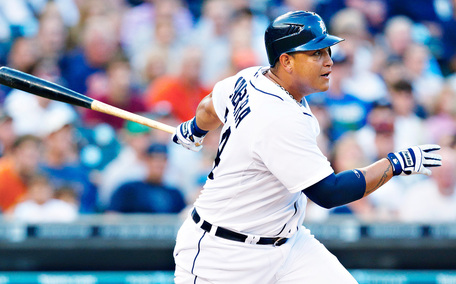
Does a Triple Crown and MVP guarantee Miguel Cabrera a first place spot in our rankings?
The hot corner has long been one of the least talented positions in the history of Major League Baseball. For instance, third base is the most underrepresented position in the Hall of Fame, with only 14 inducted members (catcher is has the second least amount with only 17 HoF members). However, today's game showcases some of the game's best at third base. A position long-defined by power (Mike Schmidt) and defense (Brooks Robinson), many of the game's best flash abilities on both sides of the ball. In the minors, this is especially true with players like Anthony Rendon and Kaleb Cowart, whose multi-dimensional skills make the future for third base quite promising. Even if these talented youngsters do not make it in the majors, third base should be in good hands with players like our number five ranked third baseman... 5. Chase Headley, San Diego Padres The sweet swinging San Diegan enjoyed the breakout campaign of the summer, capturing a silver slugger, gold glove, and finished 5th in the National League MVP voting. Prior to this year, Headley was a solid player who would showed the ability to hit for average, get on base, and play solid defense at the hot corner. What fueled his 2012 breakthrough was the drastic increase in power. Headley hit 31 home runs, saw his isolated power increase 100 points, and drove in a league leading 115 runs. What makes this emergence even more remarkable was the fact that Headley played in one of the most extreme pitcher’s parks (PETCO Park). On defense, Headley may not have deserved the Gold Glove awarded to him this past season, but still remains a strong fielder. He was six runs above average according to Ultimate Zone Rating and had the second highest fielding percentage among third baseman. Headley possesses a good amount of tools that allow him to be a threat on both sides of the ball. The only real question is what Headley will show up in 2013? Will he be the player that only hit 4 home runs in 2011 or the one that drove in 116 with 31 home runs in 2012? That remains to be seen and although it will be hard for Headley to repeat his successful 2012, Headley’s offensive improvements should be enough to make him a 4-5 win player. 4. Evan Longoria , Tampa Bay Rays Despite missing over 80 games this past season, Longoria remains one of the best in the game. If healthy, I view Longoria as the preeminent third baseman and one of the best players in baseball. Offensively, there is little Longoria cannot do. He hits for solid contact (.289 AVG in 2012, .276 for career), gets on base at an above average clip (.369 OBP in 2012, .361 for career), and hits for good power as well (.527 SLG in 2012, .516 for career). Additionally, like Headley, Longoria plays half of his games in a pitcher's park, which make his numbers look even more impressive. However, Longoria's on-field talents do not stop there as he is a justifiable two time Gold Glove winner (as compared to those that win Gold Gloves with their bat) and excellent defender. He has averaged 14.4 defensive runs saved per year and has consistently been among the league leaders in fielding chances at the hot corner. Furthermore, even though Longoria is not a characteristic "burner" on the base paths, he is an above average base runner according to the Ultimate Base Running statistic (career +9 runs above average). There is little doubt that Longoria is an extremely talented ballplayer but the question with him remains his health. He has missed parts of every season with various injuries and ailments and should be a major concern for a player locked up for $136 million through the 2020 season. However, for the time being, Longoria is one of the best at his position and if healthy, could very well be a 5-6+ win player. 3. Adrian Beltre , Texas Rangers Beginning here with Beltre, the next three decisions were extremely difficult, as each player has various strengths and weaknesses. With Beltre, he lacks any obvious weaknesses and is deservedly one of the best third baseman in the game. Defensively, Beltre is one of the best in the game with four career Gold Gloves and double-digit defensive runs saved in every season except for 2005 and 2007 (and in both of those seasons, Beltre still produced above average DRS ratings). Undoubtedly, whether from the eye test or defensive metrics, Beltre is lauded for his defensive prowess. Offensively, believe it or not, is where Beltre falls slightly behind his hot corner counterparts. The main reason for this comes down to his worse on-base skills and home-ballpark aid. This is not to say Beltre is a poor hitter by any means; he rates as one of the best in baseball as exemplified by his .321/.359/.561, 36 HR, and 102 RBI 2012 campaign. But when his ballpark is factored in, his numbers come out slightly worse than his competitors. Additionally, it should be noted that Beltre is the oldest player on this top five list (34) and is most likely to experience age-related decline in the coming years. Nevertheless, Beltre should be a good bet to be a 6+ win player, just as he has been over the past three seasons. 2. Miguel Cabrera, Detroit Tigers Before the torches and pitchforks are raised, what separated the reigning AL MVP from being the top third basemen in the game is his defensive deficiencies. Although the fact that Cabrera moved to third base was admirable, frankly, Cabrera just wasn't very good defensively. He was a -4 run defender going by defensive runs saved and was ten runs below average according to Ultimate Zone Rating. As good as Cabrera was with the bat, his defensive deficiencies definitely cut into some of his value at the hot corner and justify his ranking as the game's second best third basemen (still high praise, by the way). Offensively, there is not much to say except that Cabrera was a beast with the bat in his hands. Obviously, he won the first Triple Crown since 1967, but his offensive success does not stop with those three statistics. He lead the league in OPS, total bases, runs created, and extra base hits. Additionally, he was third overall in OPS+ (165, which I might add was behind Mike Trout's) and lead the AL in slugging percentage (.606). Overall, Cabrera's one sided-game, as good as it is, just is not enough for the honor of being the best third baseman. Regardless, Cabrera is one of the most consistent offensive performers of our generation and in my mind a slam dunk Hall of Famer barring a complete disaster to the rest of his career. It is very reasonable to see Cabrera being a 6-6.5 win player in 2013. 1. David Wright, New York Mets
Nowadays, Mr. Met has everything going for him. Owner of a brand-new $138 million contract, Wright stands alone on top of our third base rankings. Wright matches both the offensive abilities of Miguel Cabrera and defensive talents of Adrian Beltre. Defensively, Wright had 16 runs saved and a career low 10 errors in 155 games at the hot corner. Additionally, he had the second highest dWAR total (2.1) for a third baseman in 2012 and was 15 runs above average going by Ultimate Zone Rating. Offensively, Wright may not match Cabrera's exploits in the batter's box, but is no slouch himself. He had a 143 OPS+, .302/.391/.492 triple slash line with 21 HRs and 93 RBI. In addition, he accomplished this in a pitchers park that especially suppresses HR numbers and for the lowly 69-93 Mets. Wright will still be in his prime for the 2013 season (30 years old on Opening Day) and should remain one of the most productive players in the game. It would not be unthinkable for Wright and his multi-faceted game to again be around his 2012 WAR of 6.7 and be a 6+ win player next season. Honorable Mention:
Ryan Zimmerman, Washington Nationals
Aramis Ramirez, Milwaukee Brewers
Brett Lawrie, Toronto Blue Jays
BY: AIDAN FLYNN
 5. Brandon Phillips, Cincinnati Reds
Brandon Phillips has been the definition of durability and consistency for the Cincinnati Reds for the past six seasons. He has played in at least 140 games for each of the past six years and his numbers have been very solid. He’s coming off a 2012 in which he batted .281/.321/.433 with 18 home runs, 30 doubles and 15 stolen bases in 17 attempts. The power numbers are very good considering his positioning at second base, as he has hit at least 18 home runs in each of the last 5 seasons and at least 30 doubles in each of the last 4 seasons. However, defense is usually what lands Phillips on the highlight reels. He is known for making countless plays at second base that require seemingly impossible athleticsim. In addition, Phillips has saved a positive number of runs in each of his last 5 seasons, saving 11 a year ago. He has consistently been at least a 3.5 win player in each of the past 3 seasons so I would expect to see him reach that mark again and with the possibility of being a 4 win player in 2013.
4. Ian Kinsler, Texas Rangers
Ian Kinsler had a “down” year for his normal standards in 2012. However, he was still able to be a productive player. His walks were down (60) and strikeouts were up (90) which resulted in the lowest OBP of his career at .326. However, he was still able to hit for good power with 42 doubles, 5 triples, and 19 home runs. He also managed to swipe 21 bags in 30 attempts. It’s Kinsler’s track record that makes it realistic that his numbers will improve and return to being more like his 2011 numbers of .255/.355/.477 with 32 home runs, 30 stolen bases, 118 OPS+ and a 7.1 WAR. Although he does not particularly hit for a high batting average, Kinsler historically has made up for that with his on-base skills. Defensively, Kinsler has also been above average at second base, saving 40 runs throughout his career, despite having a high number of errors in some of his seasons. I expect Kinsler to be around a 4 to 5 win player in 2013 for the Texas Rangers.
3. Aaron Hill, Arizona Diamondbacks
Aaron Hill has not been as consistent as Phillips, but is coming off one of the best season of his career. The Diamondbacks second sacker batted .302/.360/.522 in 2012. Although he may be aided by the ballpark in Arizona, Hill hit for tremendous extra base hit power as a second baseman by slugging 44 doubles, 6 triples and 26 long balls. Hill also adds a bit of speed to his offensive game, as he stole 14 bags in 19 attempts in 2012. After a 2009 in which he launched 36 home runs for Toronto, his numbers took a steep decline in 2010 and 2011 and many thought 2009 was just a fluke. However, he is still just 30 years old and he should come into 2013 feeling very confident and healthy after his great 2012 campaign. Defensively, Hill has been average the past 2 seasons, saving 2 runs in 2011 and -2 runs in 2012. Don’t expect to see any Phillips’ like plays from Hill at second base, but his offense is what will make him around a 4-4.5 win player again in 2013 for the Diamondbacks.
2. Dustin Pedroia, Boston Red Sox
Dustin Pedroia has turned himself into a major fan favorite and team leader in Boston. Entering his 8th campaign with the Red Sox, Pedroia has put up career marks of .303/.369/.461 with a 117 OPS+. Dustin has dealt with a couple injury problems throughout his career, but it has not kept him from being a very productive second baseman. He has proven to have solid power, speed and on-base skills throughout his career, earning him a Rookie of the Year and an MVP in his first two seasons. Pedroia has hit at least 15 home runs in 4 of his last 5 seasons, at least 35 doubles in 4 of his last 5 seasons, and stolen at least 20 bags in his last 4 full seasons. Defensively, Pedroia has proven to consistently be among the best, if not the best in the game at his position. He has saved at least 11 in his past 4 healthy seasons (75 games in 2010) and has never committed more than 7 errors in his 7 seasons with Boston. He is not coming off one of his best campaigns; however this may be a result of his nagging thumb injuries throughout the season. If healthy, I expect Pedroia to return to form and be around a 6 win player in 2013.
1. Robinson Cano, New York Yankees
Almost infamously traded to the Rangers as a prospect for Alex Rodriguez, Robinson Cano has made the most of his opportunity in the Bronx, slowly becoming the game's best second baseman. His consistency is unmatched as he has been able to stay on the field for 8 seasons and has a career line of .308/.351/.503 and a 123 OPS+. He is also coming off his three best seasons, finishing in the top 6 in the MVP voting each year, winning 3 consecutive silver sluggers and 2 gold gloves. Cano’s power numbers have also increased in the last few years, putting up a very impressive 48 doubles and 33 home runs (both career highs) in 2012. He is also among the elite defenders in the game at second base as he saved 10 runs last year and 17 for his career. He also committed just 6 errors last year. Overall, Cano had the second highest WAR in all of baseball last season at 8.2. It will be tough to match that number in 2013, but still just 30 years of age I would expect Cano to be anywhere from a 6-7 win player.
HONORABLE MENTION:
Neil Walker
Marco Scutaro
Dan Uggla -Nick Rabasco
State of the Position: What used to be the premier offensive position in the game has lost some of its luster over the past years. Despite the shortcomings of RBI, it serves as a good measure of how first basemen simply are not as good as they used to be. For example, there were eleven 100+ RBI first basemen in 2008 while only four first baseman eclipsed that mark in 2012. Injuries (Justin Mourneau, Ryan Howard), positional changes (Miguel Cabrera), and skill degradation (Mark Teixeira, Kevin Youkilis) have all contributed to the slimming of the first base talent pool. Ironically, despite the talent loss, first base has become among the best paid positions in baseball. Lucrative contracts to Albert Pujols, Adrian Gonzalez, Prince Fielder, Ryan Howard, and Joey Votto have all contributed to this fiscally irresponsible splurge. As for the future of the position, only one first baseman (Jonathan Singleton) qualified for BTP's Top 100 list. One thing going for first base is that as players from other positions continue to age, many will pick up a first baseman's mitt to play the least physically demanding position in the game. This trend has already gained momentum as more and more catchers (Joe Mauer, Buster Posey) play the "cold corner" to save their legs and to keep their bat in the lineup. Anyhow, below is BTP's top 5 first baseman in the game today. 5. Adrian Gonzalez, Los Angeles Dodgers
The centerpiece of the mid-summer blockbuster between the Red Sox and Dodgers, Adrian Gonzalez remains one of the best first baseman in the game. However, Gonzalez enters the 2013 season not without questions about his own offensive abilities. He batted a solid, yet unspectacular, .299/.344/.463 with 18 home runs and 108 RBI as 2012 saw his walk rates and power numbers take significant hits. For example, from 2006-2011, Gonzalez averaged 31 HRs, 88 walks, 144 OPS+ (only 116 this year), and a .297/.380/.520 triple slash line. Additionally he saw his normally excellent walk rate decline substantially from 10.4% to a below average 6.1%. So while 2012 would be a good season for most, it fell well below his usual standards. Defensively, he continued to excel as one of the best fielders at his position with 15 defensive runs saved and a 17 runs above average according to Ultimate Zone Rating (UZR). In order for Gonzalez to remain a top 5 first baseman, he needs to reverse the aforementioned batting trends that plagued him in 2012. His track record is what made him so appealing to the Dodgers when he was first acquired. He is familiar with NL West after playing much of his career in San Diego, and it is certainly plausible to see his numbers return to pre-2012 heights. I expect him to be about a 3.5 win player in 2013.
4. Adam LaRoche, Washington Nationals (currently a free agent)
One of the major pieces of the National League Eastern Division Champions, Adam LaRoche had a career year in his age 32 season. For much of his career, LaRoche has provided decent offense with decent defense but took his game to new heights in 2012. He hit a career high 33 HRs, had a 128 OPS+, and hit a solid .271/.343/.510. Add in solid glove work that resulted in his first career Gold Glove, and LaRoche's impressive package of skills has set himself up beautifully for a big contract this offseason. However, like Gonzalez, LaRoche also has several questions . Can he repeat his career year or is his career year just that? Will his age (32 years old) factor into any future decline? That remains to be seen, but LaRoche's productive 2012 showed that he deserves to be recognized as one of the game's best at his position. I actually expect LaRoche and Gonzalez to have similar seasons so a 3.5-4 win season should not be too far out of reach.
3. Albert Pujols, Los Angeles Angels of Anaheim
One year into the third largest contract of all-time, Albert Pujols produced career lows across the board. What validates his ranking as the third best first baseman in the game is that Albert Pujols' poor play is still better than most players' best performance. He hit 30 HRs, drove in 100 runs, had a very respectable .285/.343/.516 slash line, and had a 141 OPS+. In addition, he had eight defensive runs saved to go along with his reputation as one of the best defenders at his position. However, his disturbing declines in every important offensive category have left concern in Pujols' future. His walk rate has dropped below average, his strikeout rate is the highest since his rookie year, and he had the lowest HR/FB rate of his career. While Pujols remains a solid hitter and fielder, gone are the days when Pujols reigned as the game's best player. Perhaps I am overstating his decline a bit but I foresee 2013 to be more comparable to 2012 than any year from his prime. He had 4.6 WAR last year and should be 4.5-5 win player next season.
2. Prince Fielder, Detroit Tigers
The offseason's second biggest signing had one of the biggest immediate impacts, as Fielder helped justify his hefty contract by the Tigers to their first pennant since 2006. Fielder provides some of the best offensive production in the league and has an excellent blend of hitting for average, power, and ability to get on base. For example, Fielder had a .313/.415/.528 with 108 RBI in 2012 batting behind league MVP Miguel Cabrera. Although his slugging percentage and power numbers (30 HRs, lowest total since rookie season) did take a bit of a hit coming to Detroit, Fielder still managed a 152 OPS+, good enough for third in the league. Defensively, he lacks what Gonzalez, LaRoche, and Pujols bring to the table and is a below average defensive player. Yet, his offensive ability makes up for his defensive shortcomings and I just simply have more confidence in his offense compared to the others heading forward. He should once again be around a 4.5-5 win player in 2013.
1. Joey Votto, Cincinnati Reds
The 2010 NL MVP had another extremely productive season in an injury shortened 2012 campaign, which was good enough for BTP to name him as the game's top first baseman. He lead the league in OBP (.474!) to go along with a .337 average, .567 slugging percentage, 44 doubles, and a 174 OPS+. His patience at the plate is unmatched (94 walks) with the only complaint of Votto's game being that he did not hit for a lot of power in 2012 (only 14 HRs). However, Votto has hit for good power in the past and his outage could simply be a result of the knee problems that caused him to miss 48 games. Defensively, Votto saved 9 runs and was 6.5 runs above average according to ultimate zone rating. Heading into his age 29 season, Votto should be experiencing his prime in the coming years. Votto has every desirable trait from a face of the franchise first baseman and assuming good health, could have a MVP caliber season in 2013.
Honorable Mention:
Mark Teixeira, New York Yankees
Allen Craig, St. Louis Cardinals
Paul Goldschmidt, Arizona Diamondbacks
|














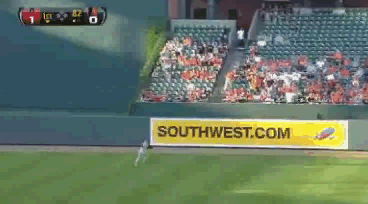



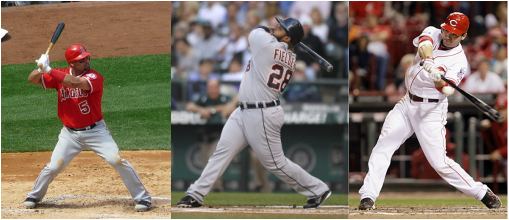
 RSS Feed
RSS Feed